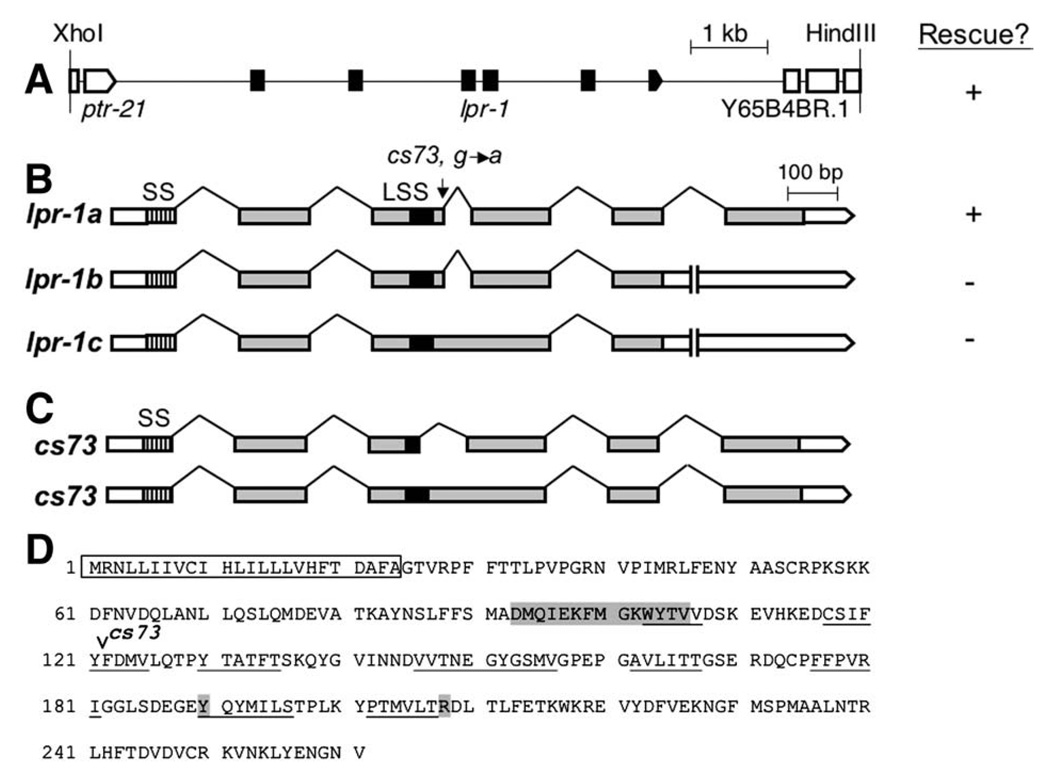Fig. 4.
lpr-1 encodes a lipocalin. (A) A 7.7 kb XhoI–HindIII genomic fragment (pCS1) containing the Y65B4BR.2 gene rescued lpr-1 mutant lethality (see Table 1). (B) We found evidence for three lpr-1 splice variants based on cDNAs ORFeome 3 (isoform a), yk1753f01 (isoform b), and yk817g08 (isoform c) (Genbank FJ174666, FJ174667, and FJ174668, respectively). lpr-1a rescued the excretory canal defects and rod-like lethality of cs73 mutants when expressed under the control of the hsp16.2, dpy-7 or unc-54 promoters (see Figs. 7, 8F). lpr-1b and lpr-1c fail to splice out intron 5, leading to a premature stop, and encode truncated proteins that lack a C-terminal alpha helix beyond the predicted beta barrel region. lpr-1c also fails to splice out intron 3 and thus inserts an additional 14 amino acids in frame into the beta barrel region. Neither lpr-1b nor lpr-1c were able to rescue cs73 lethality when expressed under the control of the unc-54 promoter: for each construct, four transgenic lines averaged 14% and 12% viability respectively (n> 100 each). cs73 is a G to A nucleotide transition that affects the intron 3 splice donor site in lpr-1a and lpr-1b; it would result in a C-to-Y amino acid change in isoform c. (C) The consequences of the cs73 lesion were determined by sequencing the two predominant RT-PCR products obtained from mixed stage mutant worm lysates after amplification with primers flanking intron 3. cs73 can result in use of a cryptic splice donor 63 nucleotides upstream of the normal intron 3 donor, leading to an in-frame deletion of part of the lipocalin signature sequence (LSS). Alternatively, cs73 can eliminate intron 3 splicing, leading to an in-frame insertion within the beta barrel region. SS, signal sequence. Grey boxes represent coding exons and white boxes represent untranslated regions. (D) Sequence of the LPR-1A protein. Box indicates signal sequence, shading indicates lipocalin signature sequence and additional amino acids conserved in most lipocalins (Flower et al., 2000) and underlines indicate the eight predicted beta-sheets that make up the lipocalin beta barrel (PredictProtein database, Rost et al., 2004).

